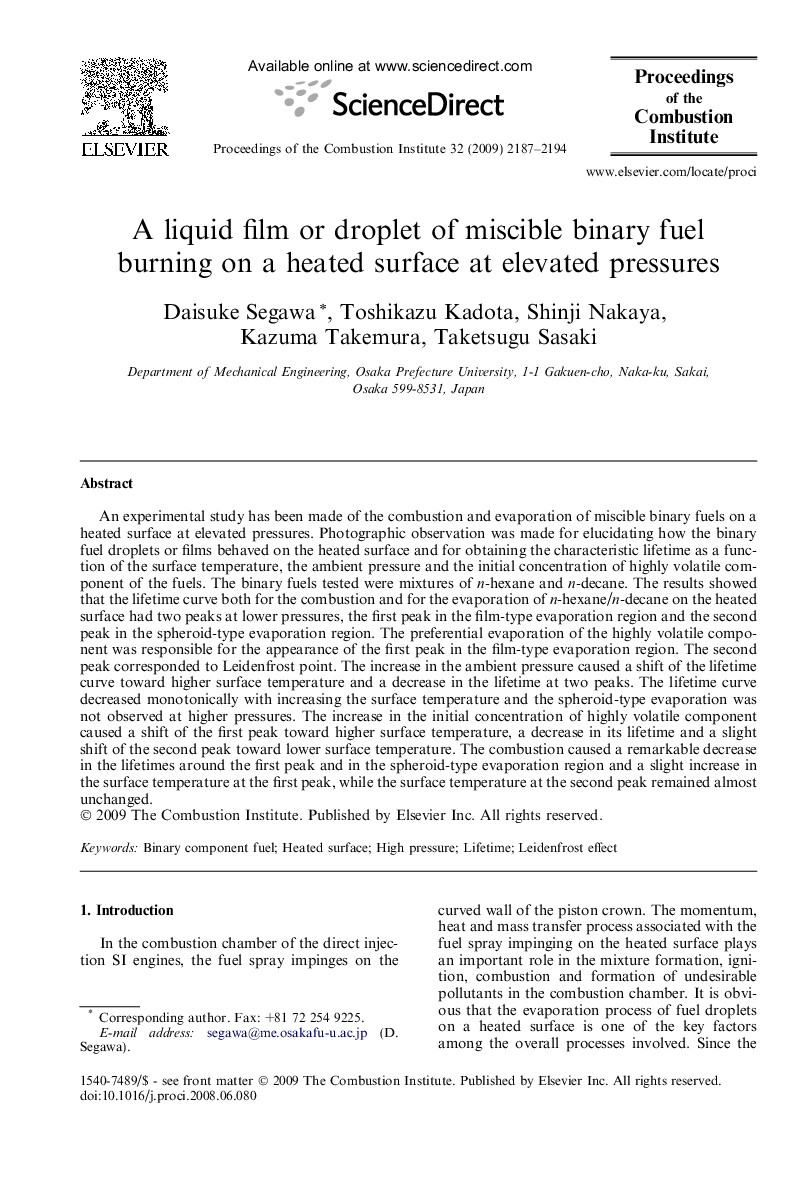| Article ID | Journal | Published Year | Pages | File Type |
|---|---|---|---|---|
| 241074 | Proceedings of the Combustion Institute | 2009 | 8 Pages |
An experimental study has been made of the combustion and evaporation of miscible binary fuels on a heated surface at elevated pressures. Photographic observation was made for elucidating how the binary fuel droplets or films behaved on the heated surface and for obtaining the characteristic lifetime as a function of the surface temperature, the ambient pressure and the initial concentration of highly volatile component of the fuels. The binary fuels tested were mixtures of n-hexane and n-decane. The results showed that the lifetime curve both for the combustion and for the evaporation of n-hexane/n-decane on the heated surface had two peaks at lower pressures, the first peak in the film-type evaporation region and the second peak in the spheroid-type evaporation region. The preferential evaporation of the highly volatile component was responsible for the appearance of the first peak in the film-type evaporation region. The second peak corresponded to Leidenfrost point. The increase in the ambient pressure caused a shift of the lifetime curve toward higher surface temperature and a decrease in the lifetime at two peaks. The lifetime curve decreased monotonically with increasing the surface temperature and the spheroid-type evaporation was not observed at higher pressures. The increase in the initial concentration of highly volatile component caused a shift of the first peak toward higher surface temperature, a decrease in its lifetime and a slight shift of the second peak toward lower surface temperature. The combustion caused a remarkable decrease in the lifetimes around the first peak and in the spheroid-type evaporation region and a slight increase in the surface temperature at the first peak, while the surface temperature at the second peak remained almost unchanged.
